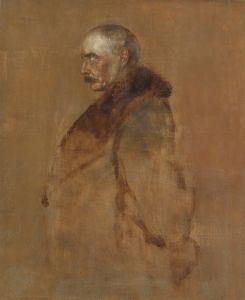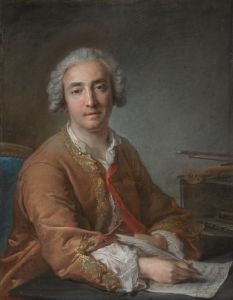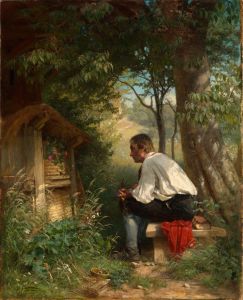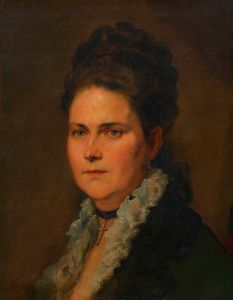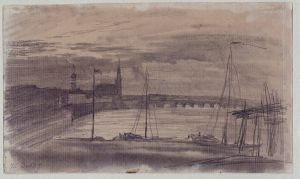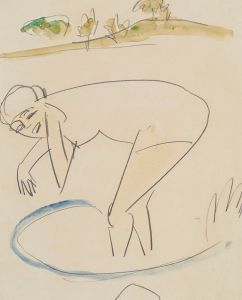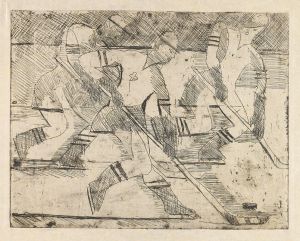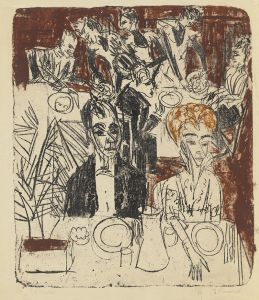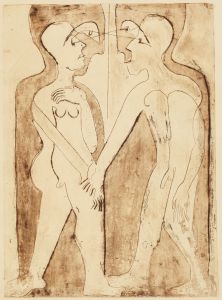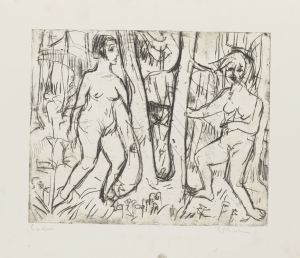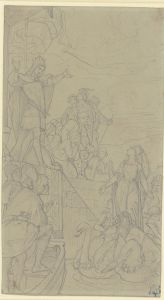
Klemperer at the piano
A hand-painted replica of Ernst Ludwig Kirchner’s masterpiece Klemperer at the piano, meticulously crafted by professional artists to capture the true essence of the original. Each piece is created with museum-quality canvas and rare mineral pigments, carefully painted by experienced artists with delicate brushstrokes and rich, layered colors to perfectly recreate the texture of the original artwork. Unlike machine-printed reproductions, this hand-painted version brings the painting to life, infused with the artist’s emotions and skill in every stroke. Whether for personal collection or home decoration, it instantly elevates the artistic atmosphere of any space.
"Klemperer at the Piano" is a painting by the German expressionist artist Ernst Ludwig Kirchner, created in 1910. Kirchner was a founding member of the influential German expressionist group Die Brücke, which played a crucial role in the development of modern art in the early 20th century. This painting is a significant example of Kirchner's work during this period, showcasing his distinctive style and thematic interests.
The painting depicts Otto Klemperer, a renowned conductor and composer, seated at a piano. Klemperer was a prominent figure in the world of classical music, known for his interpretations of works by composers such as Beethoven and Mahler. Kirchner's portrayal of Klemperer is notable for its dynamic composition and vivid use of color, characteristic of the expressionist movement. The painting captures the intensity and passion of musical performance, a theme that Kirchner explored in several of his works.
Kirchner's style is marked by bold colors, exaggerated forms, and a sense of movement, all of which are evident in "Klemperer at the Piano." The painting reflects the influence of post-impressionism and fauvism, movements that Kirchner admired and incorporated into his own work. The use of color in the painting is particularly striking, with vibrant hues that convey the emotional intensity of the scene. Kirchner's brushwork is expressive and dynamic, adding to the sense of energy and movement.
The setting of the painting is intimate, focusing closely on Klemperer and the piano. This focus creates a sense of immediacy and engagement, drawing the viewer into the moment of musical creation. Kirchner's interest in capturing the essence of his subjects is evident in the way he portrays Klemperer, emphasizing the conductor's concentration and dedication to his art.
"Klemperer at the Piano" is part of a broader body of work by Kirchner that explores themes of modernity, urban life, and the human experience. His paintings often depict scenes of contemporary life, including cityscapes, street scenes, and portraits of individuals engaged in various activities. Through these works, Kirchner sought to capture the spirit of the early 20th century, a time of rapid change and innovation.
The painting is housed in the Brücke Museum in Berlin, which holds an extensive collection of works by Kirchner and other members of the Die Brücke group. The museum is dedicated to preserving and promoting the legacy of German expressionism, providing insight into the artistic and cultural context in which Kirchner and his contemporaries worked.
"Klemperer at the Piano" remains an important work in Kirchner's oeuvre, exemplifying his contribution to the expressionist movement and his ability to convey the emotional depth and complexity of his subjects. Through his innovative use of color and form, Kirchner created a powerful visual language that continues to resonate with audiences today.





